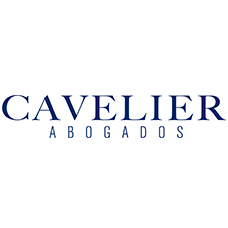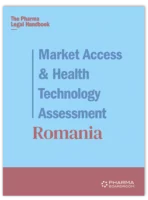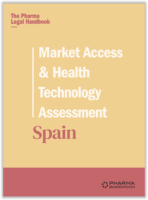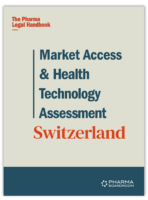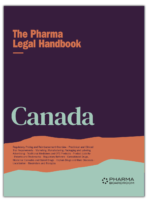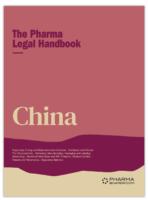Regulatory, Pricing and Reimbursement
Cavelier Abogados / Colombia
Need to know about regulation, pricing and reimbursement in Colombian pharma? Read on! Prepared in association with Cavelier Abogados, a leading global law firm, this is an extract from The Pharma Legal Handbook: Colombia, available to purchase here for GBP 119.
1. What are the regulatory authorities with jurisdiction over drugs, biologicals, and medical devices in your country?
Jurisdiction over drugs, biologicals and medical devices is centralized at the Colombian National Food & Drug Surveillance Institute, better known as INVIMA. This is a decentralized agency of the Ministry of Health, created in 1993. More information available at invima.gov.co.
Additionally, according to Article 132 of Law 1438/2011, the Superintendence of Industry and Commerce (SIC) is the entity in charge of investigating and sanctioning infringements against the price control regulations of medicines and medical devices. The same authority is competent regarding the omission, reluctance to or inaccuracy in the provision of price information to the Medicines Price Information System – SISMED.
2. What is the regulatory framework for the authorization, pricing, and reimbursement of drugs, biologicals, and medical devices?
In Colombia there are two types or regimes of price control for drugs and medical devises:
- Price report, under which prices are set freely but it has to be reported to SISMED
- Direct Price control which the authority sets the maximum price.
The regulatory framework for the authorization of drugs, biologicals and medical devices is framed through Decree 677/95 for chemical synthesis drugs Decree 1484/12 for biologicals, and Decree 4725/05 is applicable to medical devices. Each of these Decrees has been subject to additional regulations:
- Law 1751/2015, regulated by Decree 780/2016, provides the general national framework on health rights and duties in Colombia;
- Resolution 3951/2016, established the reimbursement procedure at the Fund of Solidarity and Assurance (FOSYGA) for supplying medicines, medical services and health benefits not included in the Health Benefits Plan. However, FOSYGA was substituted in its functions by the Administrator of the Resources of the General System of Social Security in Health (ADRES) since August 1, 2017, as established by Act 1753 of 2015.
- Price control over drugs and medical devices is determined by National Medicines and Medical Device´s Prices Commission (CNPMD in Spanish according to Act 100/1993, Act 1438/2011, Decree 1071/2012 and Decree 705/2016. The CNPMD annually assign a reference price for all medicinal products marketed in the country. This price is considered a regulatory tool to establish the price for each commercial presentation of the medicinal product. A product will enter on a direct price control system (fixed price control) if: i) It has a higher retail price than the reference price of the corresponding homogeneous group and/or ii) The class of products do not form a homogeneous group, with at least three or more references of the product.The methodology for setting the price of new medicines based on the evaluation carried out by the Institute of Technological Assessment in Health (IETS in Spanish) was set by Circular No. 013 of 2022 which was issued by the National Commission of Medicines and Medical Device´s scope (CNPMD). Circular No. 13 establishes the maximum sales price, the price per unit for the regulation of unavailable vital medicines and other provisions. The National Medicines and Medical Device´s Prices Commission (CNPMD in Spanish) issued on July 25, 2022, Circular No. 014 of 2022. This new piece of law regulated the supervised freedom regime for some products and created the system to report information on prices of medical devices.
3. What are the steps to obtaining authorization to develop, test, and market a product?
It is mandatory to obtain a marketing authorization (MA) or health registration to manufacture, sell, import or export a drug product. Requirements and procedures depend on the product, its background, indications of use and risks.
3.A. STEPS TO OBTAINING MARKETING AUTHORIZATION OF NEW DRUG PRODUCTS:
Usually, the marketing authorization for a new medicinal product may take between 9 months to 12 or 20 months depending on the product supporting information. In practice, INVIMA takes more time than the legally established limits.

1= TACIT WITHDRAWAL: Should the interested party fail to comply with one or more requirements, the process will be acknowledged as dismissed.
3.B. STEPS TO OBTAINING A MARKETING AUTHORIZATION FOR PRODUCTS INCLUDED IN OFFICIAL PHARMACOLOGICAL REGULATIONS
Usually, the marketing authorization for drug products included in Official Pharmacological Regulations may take from 4 months to 9 or 12 months depending on the product supporting information. In practice INVIMA takes more time than the legally established limits.
4. What are the approximate fees for each authorization?
| GOVERMENT FEES IN USD FOR MARKETING ATHORIZATION FOR A: | |
| Drug Product included in the Pharmacological Code | 3,200 |
| New drug | 7,000 |
| Biological Products | 7,238 |
| Good Manufacturing Practice Certificate | 12,035 |
5. For how long are marketing authorizations/registrations valid? How are marketing authorizations/registrations renewed?
Marketing authorizations are valid for five years.. Renewals shall be requested for no later than the third month prior to the expiration date.
6. How does the authorization process differ between brand-name products and generic products? Are there differences for local manufacturers versus foreign-owned manufacturers?
- If it is an innovator or new drug product, the authorization process takes longer because the scientific and technical information is completely new Besides, there is no worldwide data about safety nor efficacy of the new drug.
- If it is a generic product or a drug product listed on the Colombian Official Pharmacopeia, the authorization process will be shorter because the technology is sufficiently demonstrated. This rule applies equally for both local and foreign-owned manufacturers. The first phase of the application to market a drug in the country begins with the pharmacological evaluation. “This is the procedure by which the health authority evaluates the usefulness, suitability and safety of a drug. This evaluation is initially carried out by the support group in conjunction with the Specialized Chambers in drugs and biological products of INVIMA. In the case of some generic drugs, Bioequivalence a medicine is equivalent in terms of quality, efficacy, and security in the patient in respect to a reference one and considers that both have the same active principle and doses, but different manufacturing origins.
- For products of biological origin there are no generics, and biosimilars may take as long as the innovator, but depending on the type of molecule and its size, INVIMA may allow abbreviated routes that may expedite the process.
7. How are combination products (drug + drug, drug + biologic, drug + device, biologic + device, drug + biologic + device) regulated?
There is no specific regulation for combination drug or biological products. The only regulation is established under Decree 4725/05 for medical devices + drug products. According to what is set in this Decree, combination products will be ruled according to their main indication or function. If it has a pharmacological action, then it will be ruled under drugs regulations. If the main indication or function is to work as a device and the role of the drug is more of an accessory, then the product will be ruled under medical device dispositions.
8. How is compliance with regulation monitored and evaluated? Is the regulatory regime comparable with the expectations and requirements of the US Food and Drug Administration (US FDA) or the European Medicines Agency (EMA)?
Compliance with regulation is monitored and evaluated by INVIMA, as Colombian regulatory authority through periodical inspections scheduled by the authority or upon complaints received anonymously or from third parties. Regulatory regime is based on the local rules for each category of product, and as an authority, INVIMA is autonomous in decision-making but approvals by agencies such as the FDA and EMEA may serve as a reference.
9. What is the potential range of penalties for noncompliance?
Penalties include fines of up to10.000 Minimum Monthly Wage, fines should be appraised by INVIMA considering several criteria as the severity of the infringement and whether there are previous offences by the same subject. In case the investigation is transfer to the Superintendence of Industry and Commerce, penalties are much higher and can reach up to 5.000 Minimum Monthly Wage.
It is worth mentioning that the Minimum Monthly Wage is set every year, for 2022 it was ser at one million pesos, which amounts to approximately $USD225.
10. Is there a national healthcare system? If so, how is it administered and funded?
Colombia has a Social Security System with universal healthcare coverage which is regulated by the National Government through the Health Ministry. Colombian citizens benefit from the healthcare system by being affiliated to the system, either under the contributory (private) or subsidized (public) regime.
11. How does the government (or public) healthcare system function with private sector healthcare?
The Social Security System functions as follows:
- Contributory Regime (private sector): Refers to all affiliates paying or contributing to the system through a legal fixed monthly fee (as employees or independents). Besides the contributor, relatives in the first degree of consanguinity may be enrolled as beneficiaries: wife/husband and children under 18. In some special cases (people economically dependent on the contributor) children, parents, and relatives up to the third degree of consanguinity may be included.
- Subsidized Regime (public sector): All citizens who are unemployed and/or pertaining to levels 1 and 2 of the Sisben (a census/survey classifying the poverty levels of affiliates). The subsidized regime includes the affiliates’ families.
12. Are prices of drugs and devices regulated and, if so, how?
Price control over drugs and medical devices is determined under the National Medicines and Medical Device´s Prices Commission (CNPMD in Spanish) according to Act 1438/2011, Decree 1071/2012 and Decree 705/2016. The CNPMD annually assigns a reference price for all medicinal products marketed in the country. This price is considered a regulatory tool to establish the price for each commercial presentation of the medicinal product.
In Colombia there are two types or regimes of price control for drugs and medical devises:
- Price report, under which prices are set freely but it must be reported to SISMED
- Direct Price control which the authority sets the maximum price.
A product will enter on a direct control system (price control fixed) if: i) It presents a retail price higher than the reference price of the corresponding homogeneous group and/or ii) The class of products do not form a homogeneous group, with at least three or more references of the product.
13. How are drugs and devices used by patients paid for? What roles do public and private payers play?
Resolution 1885/2018 establishes a procedure for reimbursement at the Administrator of the Resources of the General System of Social Security in Health (ADRES in Spanish), whereby an EPS or an ECOC obtains payments for the health technologies not financed with UPC resources or complementary services. Whose supply was guaranteed to its affiliates and prescribed by the health professional or ordered by tutela judgments.
14. Who dispenses drugs and devices to patients and how are those dispensers compensated?
Drugs and devices are dispensed by Health Promotion Entities (EPS), hospitals or healthcare professionals directly. Dispensers are compensated through the ADRES. The applicable type of distribution varies according with the marketing authorization required for each drug or device.
15. What are the professional and legal responsibilities of those who dispense drugs and devices? What role do they play in providing patient care, information, and safety?
First, they must comply with all regulations applying to reception, storage, transport, distribution and dispensing of drug products. Additionally, they must register at the Special Registry of Health Service Providers.
Products authorized for sale under Rx conditions can only be sold in chemist’s stores and drugstore-pharmacies. The professional must ask for the prescription document before dispensing the medicine and should verify the prescription requirements.
It is forbidden for drugstores to have free samples in their store or to have empty packages of pharmaceuticals. In case a person or a company finds that a drug store has medical samples and is selling them, the interested party may initiate legal action against the establishment before competent authorities In any case, drugstores must provide accurate, verifiable, sufficient and clear information to patients as required in accordance with the drug product, indications, warning or precautions.





